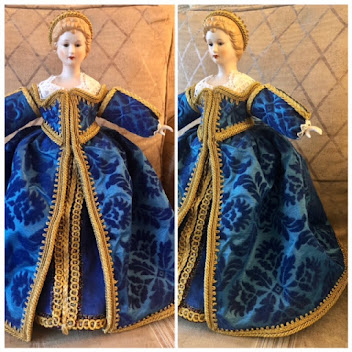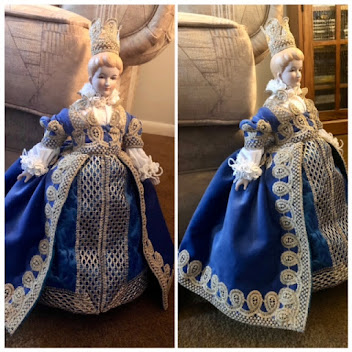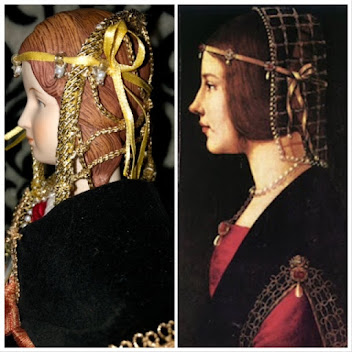I wanted to address a big elephant in the room with Western Fine Art. The lack of cultural representation for people of color. This has a direct effect on those who currently research, using art as a source for documentation. We tend to copy what we see and reproducing for the sake of historical accuracy. Although we miss the chance to live the dream and have the change to be more representative to our society as a whole. The lack of color representation is a stark contrast to how our world is today. We do have to address not only the lack of representation, additionally the depictions of slavery. The oppression put upon other human beings, resulting from the idea that one race had power over another due to the difference of skin color.
Although I know since 1610, slavery was a cultural disease in America. Where those human beings brought from Africa lost their identity, bought/sold as property, were forced in manual labor, and many unreported human atrocities happened to slaves for 255 years. There were slavery and indentured servitude in other places around the world but that doesn't erase the past and doesn't make it any less horrible. So refraining from generalized statements, opens a conversation for change. The two and a half centuries of slavery does not including the post war Jim Crow that was institutionalized racism as laws in many states and were not changed till the civil right movement in 1954-1968.
Now what does this have to do with me, it deep down bothers me. I am not a person of color but I thought about my classmates and friends who are POC. How would you feel seeing very few people of similar heritage, on the pages of your schools's approved history book. You see people of color in slavery then Jim Crow, forced relocation of the Native Americans, systemic oppression for the sake of westward expansion, and a war over human rights to name a few. Its very ugly past for a POC, until the civil rights movement and women's movement in the late 20th century. To be honest, I am not exactly proud to be part of a race of oppression. That is what a white person is as shown by history if not directly, indirectly benefited from the suffering of others. This doesn't mean if your family owned slaves that is just their family's problem, its all the white race's problem because someone benefited from another persons suffering period. I can't help the color of my skin as much as the next person but I can control my actions to be a better person. So I do my part by signing petitions, making small donations when I can, and keep an ear to the ground on headlines featuring POC that need help. Its not much but every little bit helps to be a voice for the marginalized.
As far as medieval history here is a different dilemma. The Moors attacked from Africa which began their take over of the Iberian Peninsula in 711 A.D., they assimilated into Spanish culture till the 12th century when driven out. It bothers me when I was researching medieval and later period dolls, that I didn't at least run into one Moorish descended person who had a fashion doll or figurine made. I haven't even ran into a slightly dark skinned doll from the Spanish court. It was fashionable to be light skinned, blonde haired, and female. People went to great lengths to be pale as it showed as status to stay indoors and not work outside. Not only was avoiding the sun not the best for your health, but from poisonous make up to make a temporary fashionable appearance. So I knew there would be many of that particular pale look for fashion dolls. Also figured a few red-haired ones for the influence of Queen Elizabeth would make sense. I expected at least one that would represent someone, not of the ideal style of beauty. As anyone of a more olive complexion or darker. Since a dark skinned person would still be ordering clothes, knowing how color works with your dark skin color is important. Even if it wasn't fashionable, these people exist and are a market to sell fabric and make fashion dolls.
Now my research involves dolls, aspects of represented humanity. So I went looking more deeply into this dilemma of representation. I created a Pinterest board of Medieval, Tudor and post period images that show people of color, mainly of African decent. Also located a Tumblr article of People of Color in European Art History, which has a good collection of images for each century. I do want to include a few early Native American images. I have one woodcut that shows a Native American child holding a fully dressed doll in the European style above. I have a few German and Italian image of people of color from past 1500 but few in number, maybe 6 of them. Much more men of color represented than women of color. Earlier images show an African person in religious scenes of the Three Magi in all sorts of mediums, particularly the King Balthazar is depicted dark skinned. The other common depiction is of the Saint Origen and Saint Maurice in manuscripts. The images pre-1600 show dark skinned people in various scenes. Sometimes in splendor depending on the image, mostly the subject doing their own independent work or contributing to a group scene. Less servant like posing pre-1600, it creeps in slowly. Post 1600 them the slavery/servitude theme much more common theme. There are some independent images like Dido Belle in the 18th century are few and far between, other than rare image of a free black person. |
When I look into figurines with dark skin, took a look at Larsdatter's site an had Africans in European Art I find mainly male in costume of a Moor or eastern theme clothing. Featuring loose layers of robes, a turban, belt and sword and notably male. Some female larger statues of later periods and portraits. Some of these seem more servant/slave like, no fashion other than some exotic costume. On the other end of the spectrum is servants dressed in livery of their household and that seems to be specific to the scene. I didn't see tasteful fashion dolls till the 18th century. These are not as fancy as their white counter parts, and seeing these as reproduction pieces, haven't found and extant just yet. I will look into this more and see what else I can find but when I Googled the 19th century the features become highly distorted with stereotypical facial features.
So all in all, not pleased with my findings. I think an olive complexion doll with dark hair would be plausible. Even a medieval African person living in Europe is plausible. These are both plausible, because they existed and I know they wore clothing. With the details of history being what they are; I am not making a slave/servant doll for other dolls. These are free people living their miniature medieval life. In closing the Mass Medieval Doll Project that I announced in October 2019. Is still happening, although its going to be representative of those not shown in typical medieval art. To include a variety of skin tones: copper, black, olive and tones in between. These people who also lived in Europe during the times and regions being represented in clothing styles. After all we are the Society for Creative Anachronism, we represent the modern middle ages and that includes Everyone.
Represent,
THL Marrin O'Kealy







No comments:
Post a Comment